President’s Update: Spring 2020

DEAR FRIENDS AND SUPPORTERS,
The new coronavirus is testing the mettle of institutions around the world, and ours is no exception. Faced with an unprecedented public health threat, the Manhattan Institute (MI)’s scholars have been working nonstop to offer the serious, nonpartisan, innovative thinking that is MI’s trademark. As I hope you will agree, this work is even more essential as policymakers rush to make decisions that will have profound effects on our way of life here in New York and across America. MI’s mission in the weeks and months to come will be twofold: first, we will craft practical policies that are capable of restoring the economic vitality of our country and its great cities as well as making them more resilient in the face of future challenges; second, we will mount a serious and thoughtful defense of economic freedom against those who would use the chaos and uncertainty of this moment to permanently diminish it.
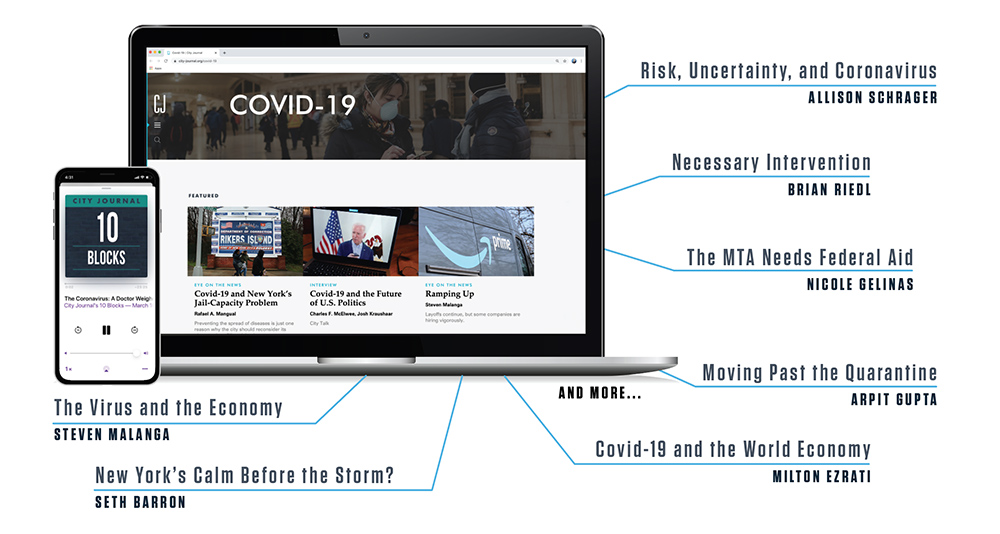
While preparing City Journal’s forthcoming spring issue, Brian Anderson and the editors recognized the seriousness of Covid-19 and began adjusting its editorial content, especially online, to address the magnitude of the pandemic. Joel Zinberg, an M.D. and economist who recently served on the White House Council of Economic Advisers, assessed the health risks of Covid-19, while also warning about America’s vulnerable pharmaceutical supply chain, now largely controlled by China. Associate editor Seth Barron offered a stark warning about New York’s hospital capacity and the challenges that the system faces as the coronavirus sends large numbers of patients to emergency rooms.
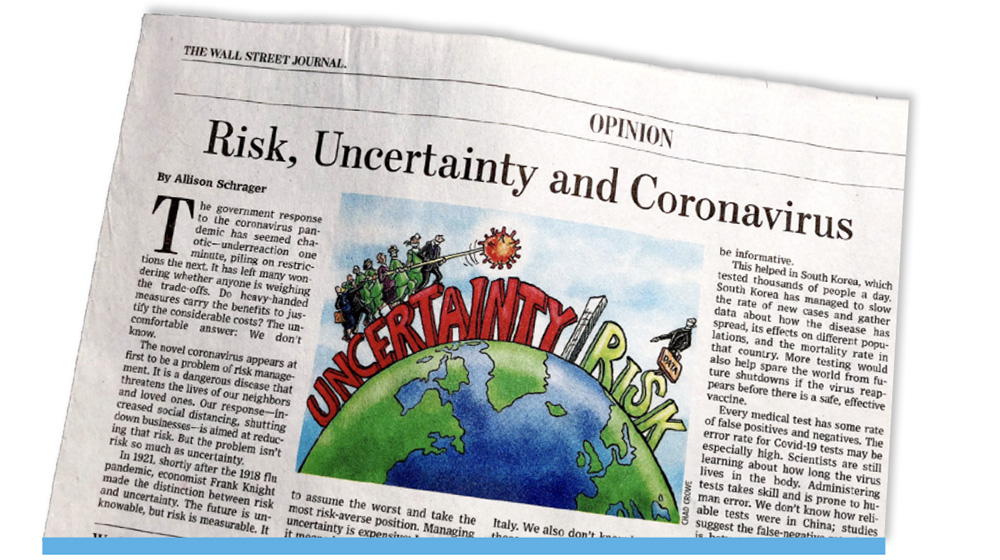 City Journal has covered the economic dimension of the pandemic from many angles, including Steven Malanga’s warning about the human impacts of large-scale economic shutdowns; Nicole Gelinas on the virus’s war on human proximity, which is key to economic life in cities; and Milton Ezrati’s broad assessment of Covid-19’s impact on the global economy. Senior fellow Mark Mills, author of the recent book Digital Cathedrals, suggested that, though it faces serious challenges from coronavirus and the surge in oil production from Saudi Arabia, Russia, and UAE, the U.S. shale industry will eventually come roaring back, primarily due to digital innovation. MI’s newest senior fellow, the economist and author Allison Schrager, analyzed the ramifications of the virus for bond markets in City Journal; and in an op-ed for the Wall Street Journal, she emphasized the importance of mass testing for moving from uncertainty about the virus to known and manageable risks—a crucial precondition to restarting the nation’s economy.
City Journal has covered the economic dimension of the pandemic from many angles, including Steven Malanga’s warning about the human impacts of large-scale economic shutdowns; Nicole Gelinas on the virus’s war on human proximity, which is key to economic life in cities; and Milton Ezrati’s broad assessment of Covid-19’s impact on the global economy. Senior fellow Mark Mills, author of the recent book Digital Cathedrals, suggested that, though it faces serious challenges from coronavirus and the surge in oil production from Saudi Arabia, Russia, and UAE, the U.S. shale industry will eventually come roaring back, primarily due to digital innovation. MI’s newest senior fellow, the economist and author Allison Schrager, analyzed the ramifications of the virus for bond markets in City Journal; and in an op-ed for the Wall Street Journal, she emphasized the importance of mass testing for moving from uncertainty about the virus to known and manageable risks—a crucial precondition to restarting the nation’s economy.
City Journal has examined the role of government policy, as in Roger Klein’s assessment of how burdensome regulations exacerbated the virus-testing fiasco; as in James Copland’s analysis of how the FDA’s review processes for promising treatments must be improved; and as in virologist and biotech investor Peter Kolchinsky’s work on how to price vaccines. MI adjunct fellow Arpit Gupta analyzed policies—such as testing, production of protective equipment, and temperature checks—that can help to move beyond quarantine to getting people back to work. Contributing editor John Tierney argued that green policies banning plastic bags are horribly timed—since reusable bags are much more likely to transmit infection—while senior fellow Stephen Eide has reported on the predicament of the homeless. When the spring issue is published, City Journal will offer several stories with direct relevance to the pandemic, including economist Matthew Clancy’s examination of the future of remote work and Mark Mills’s detailing of new technological innovations that might make us safer from such contagions in the future.
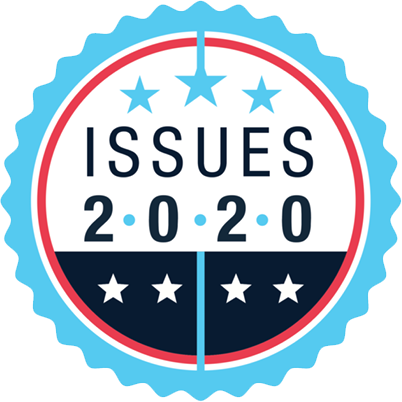 America’s capacity for resilience in the face of challenges over the long term depends on the nation’s economic fundamentals—including the national debt. But even as existing federal programs such as Medicare and Social Security are on unsustainable paths, many politicians, including candidates for president this year, have favored new social programs that would further grow the debt. The sum of $40 trillion is a conservative estimate of what it would cost the federal government to deliver “free” public college, the cancellation of all student debt, and Medicare for All over the next decade, for example. In reports published as part of MI’s Issues 2020 series, MI senior fellow Brian Riedl has highlighted the cost of these and other proposals, the futility of covering them through raising taxes on “the rich,” and how the new spending would often benefit the professional class far more than the poor. Riedl’s analyses reflect the broader goal of Issues 2020: to apply scholarly expertise to critical topics of debate during the campaign season, offer a dose of reality to misguided arguments from across the political spectrum, and outline the tough questions that major proposals must address before they can be taken seriously.
America’s capacity for resilience in the face of challenges over the long term depends on the nation’s economic fundamentals—including the national debt. But even as existing federal programs such as Medicare and Social Security are on unsustainable paths, many politicians, including candidates for president this year, have favored new social programs that would further grow the debt. The sum of $40 trillion is a conservative estimate of what it would cost the federal government to deliver “free” public college, the cancellation of all student debt, and Medicare for All over the next decade, for example. In reports published as part of MI’s Issues 2020 series, MI senior fellow Brian Riedl has highlighted the cost of these and other proposals, the futility of covering them through raising taxes on “the rich,” and how the new spending would often benefit the professional class far more than the poor. Riedl’s analyses reflect the broader goal of Issues 2020: to apply scholarly expertise to critical topics of debate during the campaign season, offer a dose of reality to misguided arguments from across the political spectrum, and outline the tough questions that major proposals must address before they can be taken seriously.
“MI senior fellow Brian Riedl has highlighted the cost of expansive federal proposals, the futility of covering them through raising taxes on ‘the rich,’ and how the new spending would often benefit the professional class far more than the poor.”
Before embarking on a new wave of entitlement programs, the United States must reckon with the costs of the coronavirus crisis, as well as the debt that it has already accumulated because of entitlement programs that have been in place for decades. On the subject of debt, Riedl delivered testimony before the U.S. Senate Committee on Homeland Security, drawing on his MI report “Why Deficits Still Matter.” Riedl explained that, under current spending commitments, America’s debt-to-GDP ratio, which stands at 78% today, will reach 105% within a decade and 194% in three decades. By 2049, interest payments on the national debt would be the federal government’s largest annual expenditure, consuming 42% of all projected tax revenues. To avoid a growth-sapping debt crisis, Riedl called for fiscally prudent reforms to the entitlement programs that are driving America’s increasing deficits.
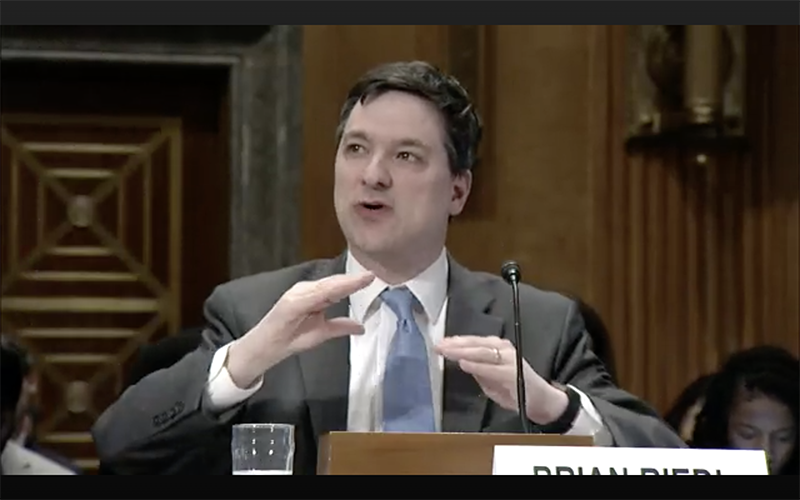
Though free college and student-loan forgiveness are often justified in the name of helping the disadvantaged, there is strong evidence to suggest that these policies would confer far greater benefits on higher-income families. As senior fellow Beth Akers explained in her Issues 2020 report, “Millennials Aren’t Drowning in Student Debt,” 66% of millennials have no student debt at all, either because they did not go to college or because they did not accrue debt in the process— and most of those with debt have modest burdens relative to their income. Those who hold the most student debt are not the poor but instead tend to come from high-earning families, have attended higher-cost colleges and universities, and have obtained graduate and professional degrees that lead to higher salaries over the long term. Building on this evidence, Akers outlined, on the op-ed page of the Wall Street Journal and in front of White House and congressional committee staff, how to target student debt assistance to those who really need it.
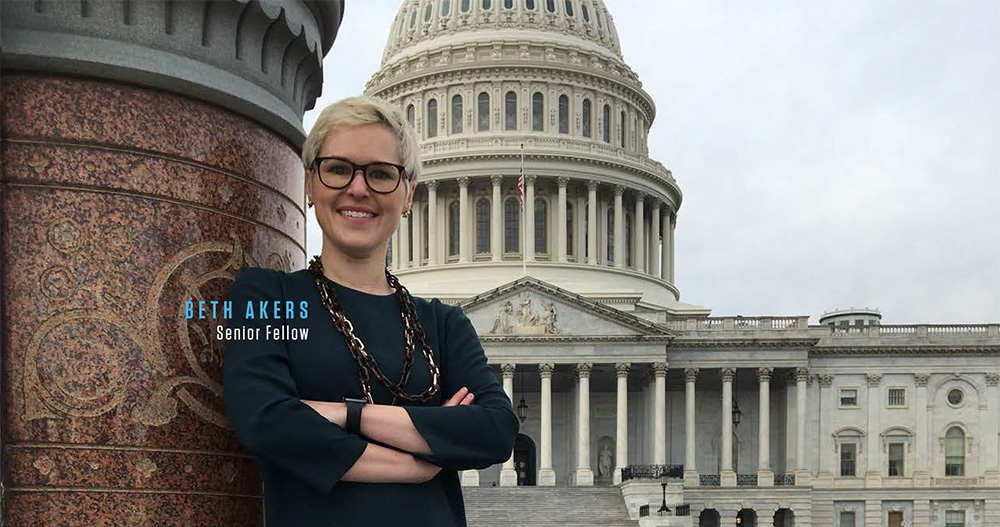
Higher education shapes not only America’s labor market but its democracy. Regrettably, many college campuses have ossified into ideological monocultures. MI senior fellow and City Journal contributing editor Heather Mac Donald has been a leading voice in defense of the traditional liberal arts, thoughtfully critiquing the new campus illiberalism. In recent months, Mac Donald was invited to speak at several schools (College of the Holy Cross and Emory University, among others) where she was greeted by protesters and hecklers. Undaunted, Mac Donald makes a powerful case for intellectual pluralism and the liberal arts in the media (see her latest in the Wall Street Journal: “Uproar over Essays Turns MLK’s Dream Inside Out”) and on campuses across America.
Like higher education, health care is a topic rife with misconceptions that are in danger of becoming accepted wisdom. For example, advocates of expanding the federal government’s role in health-care coverage often cite the universal systems of other countries as self-evidently superior to America’s market-oriented approach. But what do health outcomes in those countries suggest about the wisdom of moving in that direction? This was the question that senior fellow Chris Pope addressed in his recent report “Medicare for All? Lessons from Abroad for Comprehensive Health-Care Reform,” a comparative analysis of the health-insurance systems of eight OECD countries, including the United States. Pope concludes that single-payer systems, which restrict the ability of individuals to purchase private insurance, deliver consistently worse access to specialty care and surgical procedures, without reducing individuals’ overall out-of-pocket health-care costs. Across the eight countries that Pope examines, the ability of citizens to obtain expensive medical procedures tends to increase in proportion to their ability to purchase insurance for medical care beyond what public entitlements cover.
Market-oriented solutions to America’s health-care challenges were the subject of a major conference convened recently by the Institute’s Adam Smith Society, a program dedicated to fostering discussion and debate about public policy and the morality of capitalism among MBA students and future business leaders. Convened in San Francisco—not far from Adam Smith Society chapters at Stanford and UC Berkeley, as well as a growing professional chapter—the conference featured remarks by scholars and industry leaders on such topics as the role of technology in lowering the cost of health care. Former FDA commissioner Scott Gottlieb delivered the keynote address, which touched on the coronavirus outbreak, pharmaceutical costs, and precision medicine. Chris Pope, who participated in a panel, explained the centrality of pharmaceutical innovation in lowering health-care costs. Drawing upon his Issues 2020 report, “Drug Spending Is Reducing Health-Care Costs,” Pope explained that while newly introduced drugs, particularly for diseases that afflict a small population, are expensive when they first come to market, returns to society over the long run far surpass those to investors.
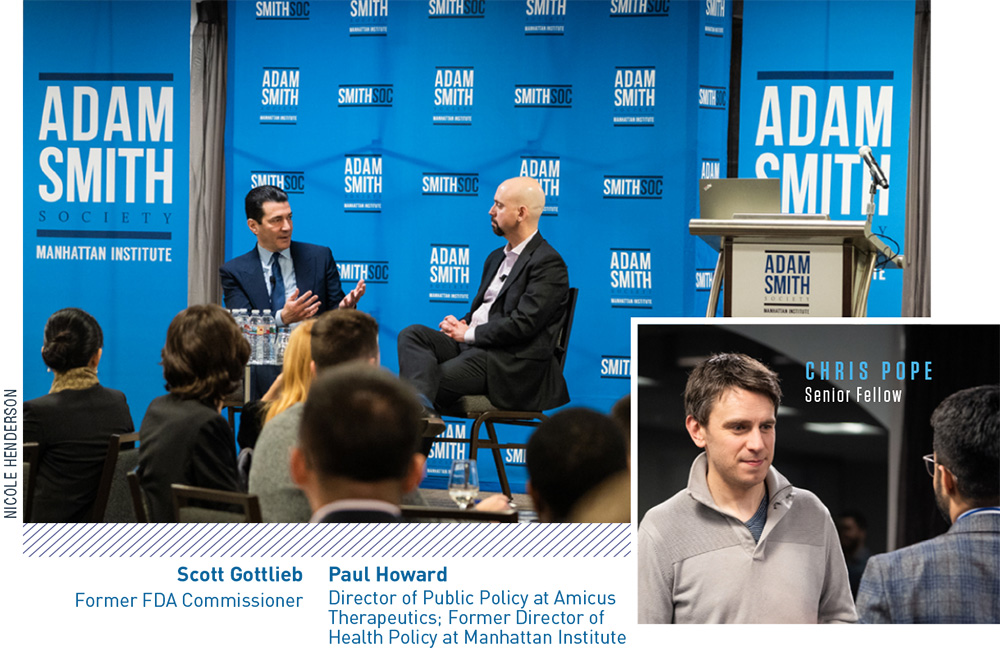
Economic growth has never been stronger in American cities, though many of the aforementioned policies would discourage it—either by incurring higher taxes or chilling innovation. The prosperity found in metropolitan areas from New York to Boulder to San Francisco has made them ever more attractive to people seeking to improve their lives. Yet these cities have often fared poorly in accommodating young newcomers. As MI senior fellow Edward Glaeser explained at the Institute’s James Q. Wilson Lecture last year, the high cost of living that young people encounter in cities has contributed to making them a reliable left-wing constituency.
Specifically, the greatest barrier that young people face in moving to cities for potential job opportunities is the high cost of housing. Politicians like New York mayor Bill de Blasio have called for addressing this problem through requiring developers to set aside a percentage of new units to be rented exclusively to lower-earners: “mandatory inclusionary zoning” (MIH). But according to MI adjunct fellow Eric Kober, who had a 38-year career at the NYC Department of City Planning, MIH is an ineffectual approach to generating more housing. In his report “De Blasio’s Mandatory Inclusionary Housing Program: What Is Wrong, and How It Can Be Made Right,” Kober notes that the de Blasio program has produced only 2,045 affordable units since 2016—inconsequential for a city of 8.5 million people. Reported in Politico, New York Daily News, and The Real Deal, Kober’s report explained that the stringent requirements imposed by MIH have acted as a tax that discourages desperately needed new housing development.

Though the rise of street homelessness is often attributed solely to high housing prices, MI’s Stephen Eide has called attention to a far more important dimension of the problem: policies that have compromised cities’ ability to help those who suffer from severe mental illness. In his report “Responses to Homelessness: The Law-Enforcement Dimension,” Eide chronicles how the decades-long policy of emptying our asylums has forced many individuals to bear the burden of their illness on America’s streets, a public shame that Eide implores policymakers to remedy through such measures as outpatient civil commitment, which requires the severely mentally ill to submit to regular psychiatric care or face an inpatient commitment. In New York, these measures have been a stunning success: over 50% of mentally ill homeless people who began outpatient civil commitment had stable housing by the time they completed their treatment. In an op-ed for the Los Angeles Times, Eide underscored the need for more proactive engagement with the service-resistant homeless in the new Covid-19 reality. Though Covid-19 dominates newspapers and television media, the homeless can be hard to reach. Cities need to ensure that the homeless community is educated about the scope of the threat. Additionally, as cities scale up their medical capacity, they need to set aside space where the infected homeless will be able to safely quarantine themselves without endangering the larger community.
“Though Covid-19 dominates newspapers and television media, the homeless can be hard to reach. Cities need to ensure that the homeless community is educated about the scope of the threat.”
Rising homelessness and declining public order harken back to a darker era of American urban life. The revitalization of U.S. cities since the 1990s has been intimately tied to the success in driving down rates of violent crime, including by keeping dangerous felons off the streets. As some cities enact reforms to correct what they perceive (accurately or not) as excesses in punishing nonviolent offenders, there is a danger that some measures go too far and threaten to compromise hard-won gains against crime and disorder.
MI fellow Rafael Mangual is advancing a more prudent path. In his recent issue brief “Reforming New York’s Bail Reform: A Public Safety Approach,” Mangual observes that New York recently prohibited bail requirements for most misdemeanors and nonviolent felonies, while at the same time declining to empower judges with the authority to remand defendants who pose an elevated public safety risk. No other state combines these features, and the ill effects of the combination are already visible. New York’s new bail law went into effect on January 1, and in its first month, 143 individuals awaiting trial committed 240 crimes, some heinous enough to capture the attention of the city. Mangual instead urges the state legislature to enact legislation that would preserve the core principle of the reform—that a poor but nonthreatening defendant should not await trial in jail, just because he is poor—without risking the safety and peace of mind of New Yorkers. He argues that judges ought to be empowered to remand defendants who pose significant risks to public safety and that released defendants who are rearrested while awaiting trial ought to be mandatorily remanded. Finally, Mangual suggests that New York boost its funding for judges, prosecutors, public defendants, and case investigators to ensure that jailed defendants receive a fair and speedy trial.
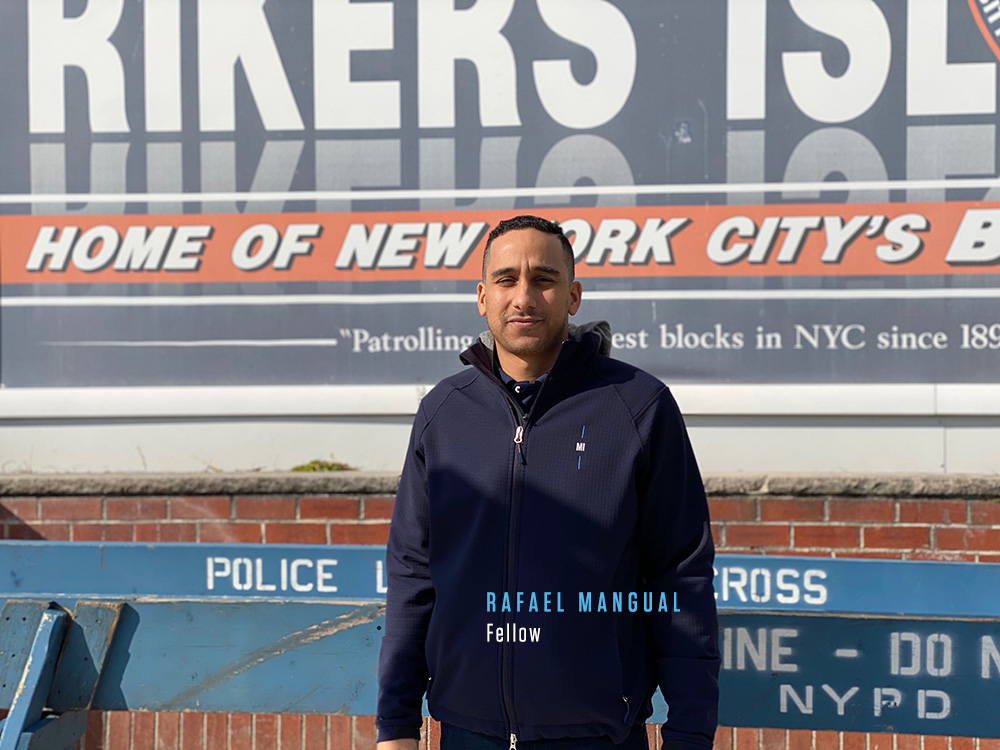
Many ex-offenders, after paying their debt to society, struggle to integrate into the social and economic mainstream—and end up committing new crimes. Thankfully, social entrepreneurs are working outside government to develop strategies to support successful reentry. MI’s annual Civil Society Awards program has recognized many such nonprofit leaders over the years. In January, George Will devoted his Washington Post column to recount the work of one such winner—Steve Shelton, founder and operator of the Trade Institute of Pittsburgh (TIP). TIP offers 10 weeks of free training to people trying to enter the building trades. To date, 85% of participants have come out of the Pennsylvania penal system—and have managed a recidivism rate 34% lower than the state average.

Education can put young people on the right track and empower them to make good decisions as they come of age. Ten years ago, policies to expand the charter school sector were a rare spot of bipartisan agreement. Today, more politicians want to restrict charter schools’ growth. What changed? Not the data. If anything, the evidence on the benefits of charter schools for low-income students has grown only stronger. So argued senior fellow Max Eden in his Issues 2020 report, rebutting the main arguments against expanding charters: “Charter Schools Boost Results for Disadvantaged Students and Everyone Else.” And MI senior fellow Marcus Winters authored a January report showing that growing attendance of charter schools in Newark, New Jersey, where charters educate a third of public school students, has led to large improvements in test scores in reading and math.
While charter schools are indispensable for many families, others are attracted to the holistic education offered by parochial schools, an option that we should work to preserve. As Kathleen Porter-Magee, superintendent of the Partnership Schools network, outlined in a report last fall, Catholic schools are under increasing economic strain because they overwhelmingly serve low-income populations and because donations from parishioners have decreased alongside declining church attendance. At a December event, “The Future of Catholic Schools in American Education,” MI brought together leading voices from Catholic education networks and school reform movements to discuss strategies for reinvigorating Catholic education and private education writ large—a mission that we are excited to pursue in the years ahead.

Now more than ever, MI understands that good ideas need evangelists and networks. Through the tireless efforts of its editorial team, City Journal is putting down a marker for MI’s expertise on issues related to the Covid-19 outbreak. Our scholars are responding in real time to the policy challenges raised by this public health emergency, advancing the principles of a free society in an uncertain time. MI will continue to cultivate champions of our principles in the professional world, organizing virtual programming for the Adam Smith Society and Young Leaders Circle (YLC) in lieu of our traditional public gatherings. Likewise, we will postpone MI’s Alexander Hamilton Award dinner, originally scheduled for April 29, to October 20, in light of the ongoing health and safety concerns related to the virus. This year’s Hamilton Award dinner will honor three individuals who embody the principles that the Institute stands for: philanthropist and charter school advocate Daniel Loeb; and the Federalist Society’s Eugene Meyer and Leonard Leo. Grateful for your support, I hope that you will plan now to join us for the Hamilton dinner in October. We rely on your support, especially in challenging times such as these. I wish you and your family well.
Sincerely,
Reihan Salam
Are you interested in supporting the Manhattan Institute’s public-interest research and journalism? As a 501(c)(3) nonprofit, donations in support of MI and its scholars’ work are fully tax-deductible as provided by law (EIN #13-2912529).






